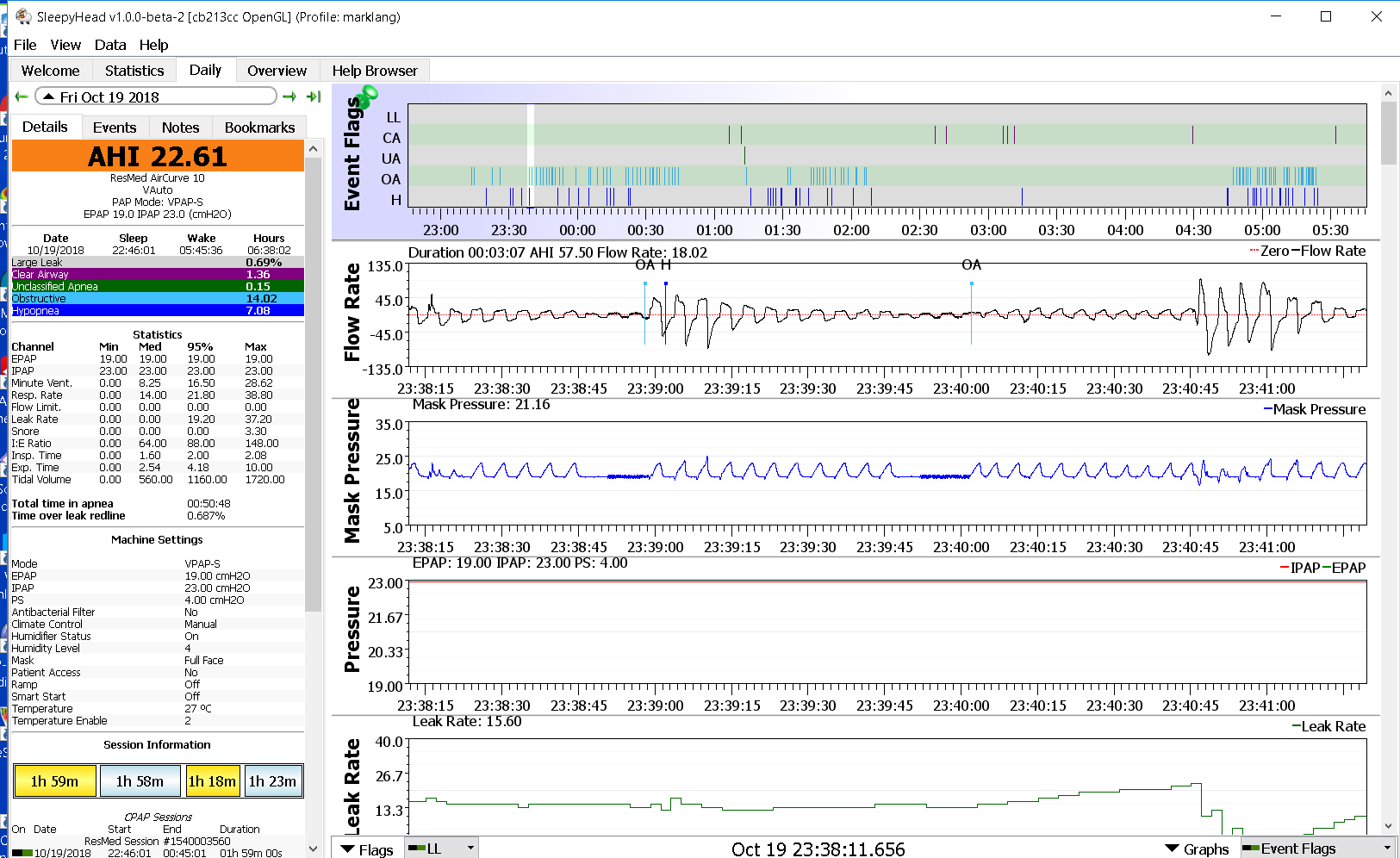Flow limitation
Flow limitation may be inspiratory (during inhale) or expiratory (during exhale). It refers to any condition which impares the flow-rate of air through the respiratory tract. Inspiratory Flow limitations occur to many individuals that are diagnosed with obstructive sleep apnea. Inspiratory Flow Limitation (IFL) is an increasing resistance in inspiratory flow that slows the volume and flow of air as the inhale proceeds. It is visualized in a flow rate graph as a flattened or downward sloping wave-form rather than a smooth peak. Expiratory Flow Limitation (EFL) is similarly restricted flow rate during the exhale cycle. Flow limitations can result from anatomical narrowing of the airway, airway obstruction, and positional obstruction where the airway is restricted due to an individual's sleep position resulting in occlusion of the airway. EFL may also result from an intolerance to CPAP pressure during exhale. Both IFL and EFL seem to respond well to bilevel therapy where the exhale positive air pressure (EPAP) is a lower pressure than the inhale positive air pressure (IPAP).
Related articles Flow Limitation/UARS and BiPAP a physician's perspective by Barry Krakow MD.
The images below are an example of a forum member that was experiencing severe flow limitation. The complaints were that the Resmed Airsense 10 Autoset CPAP which was originally set to a minimum pressure of 6 and maximum pressure of 16, was reaching uncomfortably high pressures, remaining near the maximum pressure most of the night. The user experienced discomfort and a high incidence of respiratory event related arousals (RERA). A high rate of flow limitations was causing pressure to increase without corresponding therapeutic benefits. It was recommended that the user reduce the maximum pressure to 11.0 cm, and increase exhale pressure relief (EPR) to 3. In bilevel terms, this was equivalent to increasing pressure support (the difference between IPAP and EPAP). If this was a bilevel, pressure settings would be expressed as EPAP 6.0 to 8.0 with pressure support of 3.0 cm. The images show the progress experienced by increasing the EPR level from a setting of 1 to a setting of 3. The first image is a very good example of "typical" inspiratory flow limitations.
Flow Limitation in Positional Obstructive Apnea
This forum thread shows an example of severe obstructive apnea with flow limitation. CPAP Produces Variable Results New User With help from forum members, it was recognized that the culprit for the numerous events was a positional apnea. The important clue was the flow limitations in the user's chart that showed severe restriction of flow. This can be seen on page three of the thread the following graph. The member Marklang was using a Popitz ergonomic pillow, and resolved the apnea and flow limitation with a combination of a soft cervical collar and a Resmed Aircurve 10 Vauto bilevel to achieve AHI less than 1.0.

Donate to Apnea Board



